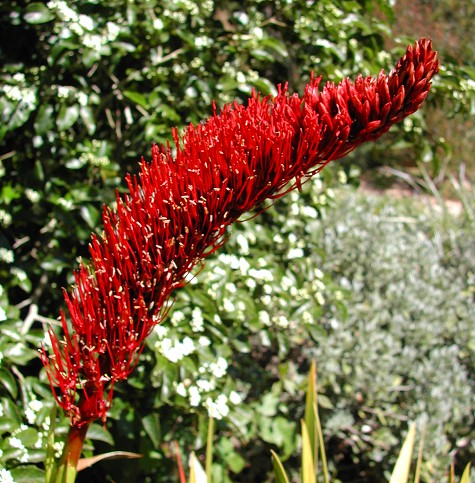Poor Knights Lily
Germinating the seeds
* The seeds are fragile, so handle them gently. When to plant -- Plant them when you receive them for the best germination. Getting started -- The seedlings should remain undisturbed in their container for 9 to 12 months after sprouting. So it may be easier to start the seeds together in a single container or two, instead of in individual pots. There should be enough room so each seed is 1 inch (3 cm) between others seeds. Use pots with drainage holes. Start by filling the pot with a well-draining mix, such as
2 parts potting soil to 3 parts
perlite Gently place the seeds about 1 inch (2.5 cm) from each other, and cover with a thin layer of long-fibered sphagnum moss (not ground peat moss). This helps retain moisture around the seeds while allowing light to reach them, which aids germination. This photo shows how much moss to use. Add water until everything is evenly moist (but not soggy). Keep the pots between 55-77°F (13-25°C) during the day, and between 45-58°F (7-15°C) at night. Cool night temperatures seem to be important for proper germination. This may be achieved by using a wine chiller, or perhaps by putting them in the door of a refrigerator each night, although i have not tried this. Avoid letting them get above 80°F (27°C) for prolonged periods. I recommend placing a minimum/maximum thermometer near the pots, especially if using a heating mat. Until the seeds sprout, ensure that the soil surface and sphagnum moss stays moist. An easy way to maintain humidity is to enclose the pot in a plastic dome or bag - just leave it open a crack to allow some fresh air to enter. You might need to drip some water on the moss & soil once or twice a day to keep it moist. Be careful not to let the soil stay too soggy though. Give them bright light, but no direct sun. A fluorescent or LED bulb kept 4 inches (11 cm) away provides the right amount of light. The seeds can sprout at various times, usually starting some time after 4 weeks. Some of them may take up to 6 months. Once they sprout, increase air circulation slightly to prevent fungal diseases, and at 12 weeks old, remove any dome or bag that you used. For the first month after sprouting, continue keeping the soil surface moist, since their root system is small at first. Watch for slugs and insects while they are small. For the first 2-3 months, give bright light with protection from strong sun. After a few months, you can gradually expose them to stronger light. When they are 1 week old, feed every 2 weeks with a small amount of dilute (1/8 strength) liquid fertilizer. Hydroponic fertilizer is ideal for young seedlings, since it is easily absorbed and contains all essential nutrients. Once they are 3 months old, you may switch to an all-purpose granular fertilizer that contains micronutrients. Or continue feeding with dilute liquid fertilizer every 2 weeks. Fluorescent or LED lighting or the equivalent is fine the first year. Sun is fine, but avoid strong sun exposure until the second year. For the first year, avoid transplanting the seedlings or disturbing the roots. Tips on growing older Xeronema plants.
|
|||||||||


